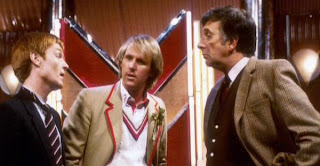City of Death
by David Agnew
Originally Broadcasted: September 29th-October 20th, 1979
The Doctor and Romana are on holiday in Paris, but things get back to normal as they experience a time distortion. They visit the Louvre and are trailed by a detective who gets them tangled up in the affairs of Count Scarlioni, who plans to steal the Mona Lisa from the Louvre to save his ancient race, the Jagaroth...
City of Death has a spirit all of its own. It has a bouquet. This story stands up high as one of the greatest Doctor Who stories of all time. Originally penned as
The Gamble with Time by David Fisher, it was re-written as
City of Death by the legendary Douglas Adams. The best elements of Fisher's script are kept, but interjected with Douglas Adams clever storytelling and witty one-liners. In fact the comedic element may be my favorite part of
City of Death. The scene in Episode Two where The Doctor, Romana, and Duggan meet the Count and Countess Scarlioni is just pure comedic gold. "You're a very beautiful woman, probably." That sentence right there sums up The Doctor's views on romance, at least until Paul McGann came along... This story featured Doctor Who's first ever overseas shoot, and they picked an obvious, yet wonderful choice in Paris. The scenes of The Doctor and Romana just enjoying the sights of Paris in Episode One are fantastic. Add to that one of Dudley Simpson's best ever scores for the show and you get a rather lovely piece of television. The supporting cast has a lot to live up to with a leading actor as great as Tom Baker, yet
City of Death's cast delivers. Julian Glover, who would later go on to portray the baddie in the James Bond film
For Your Eyes Only, as well as the baddie in
Indiana Jones and the Last Crusade, plays the villain in this story, Scarlioni, otherwise known as Scaroth, the last of the Jagaroth. His intentions are actually not that evil, he just wants to save his own race. Unfortunately, to do that would mean stopping the human race from ever developing. Even more awesome is Duggan, the Detective sent to investigate the art scene in Paris. This guy thinks with his fists, and while his chemistry with The Doctor and Romana was a little tense, they still got along. I think he would of made a great companion, but sadly The Doctor had to say "Bye bye Duggan!" Due to a strike that caused the only television rival at the time, ITV, to go offline,
City of Death became the highest viewed Doctor Who story of all time, with Episode Four getting 16.1 million viewers! With its hilarious one liners, fantastic script, and excellent cast,
City of Death stands as a prime example of a good Doctor Who!
Luke's Rating:
10/10

























